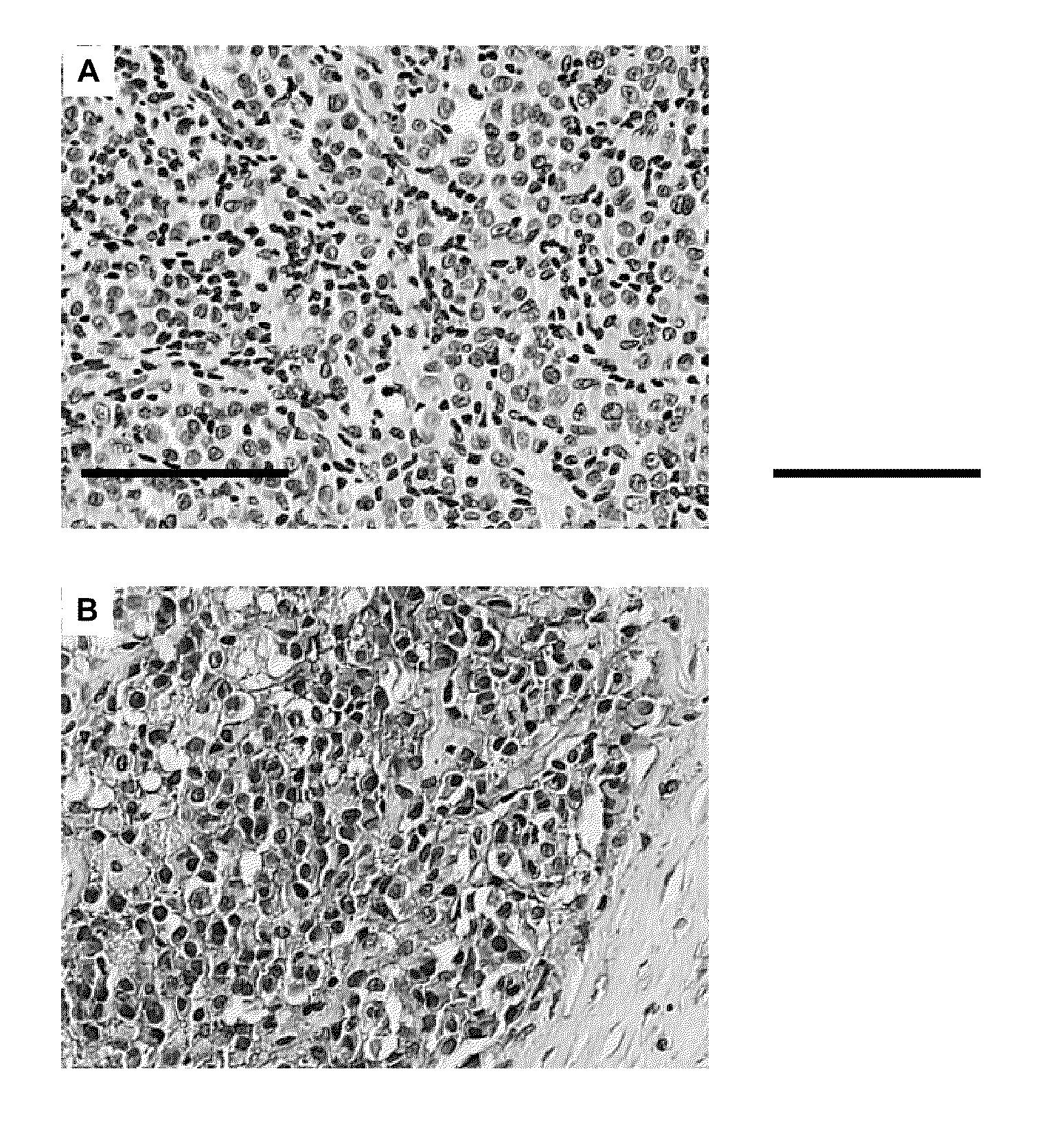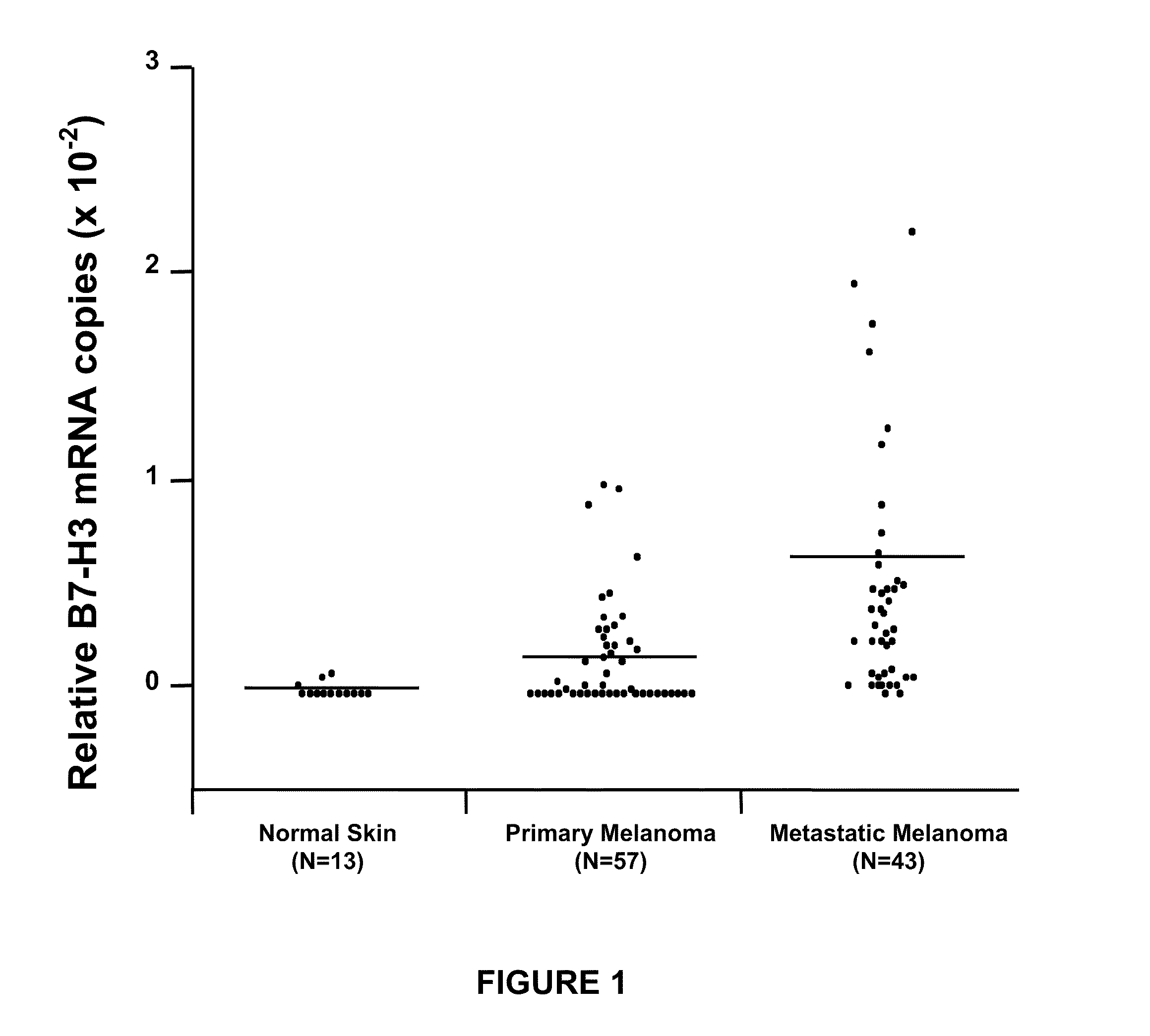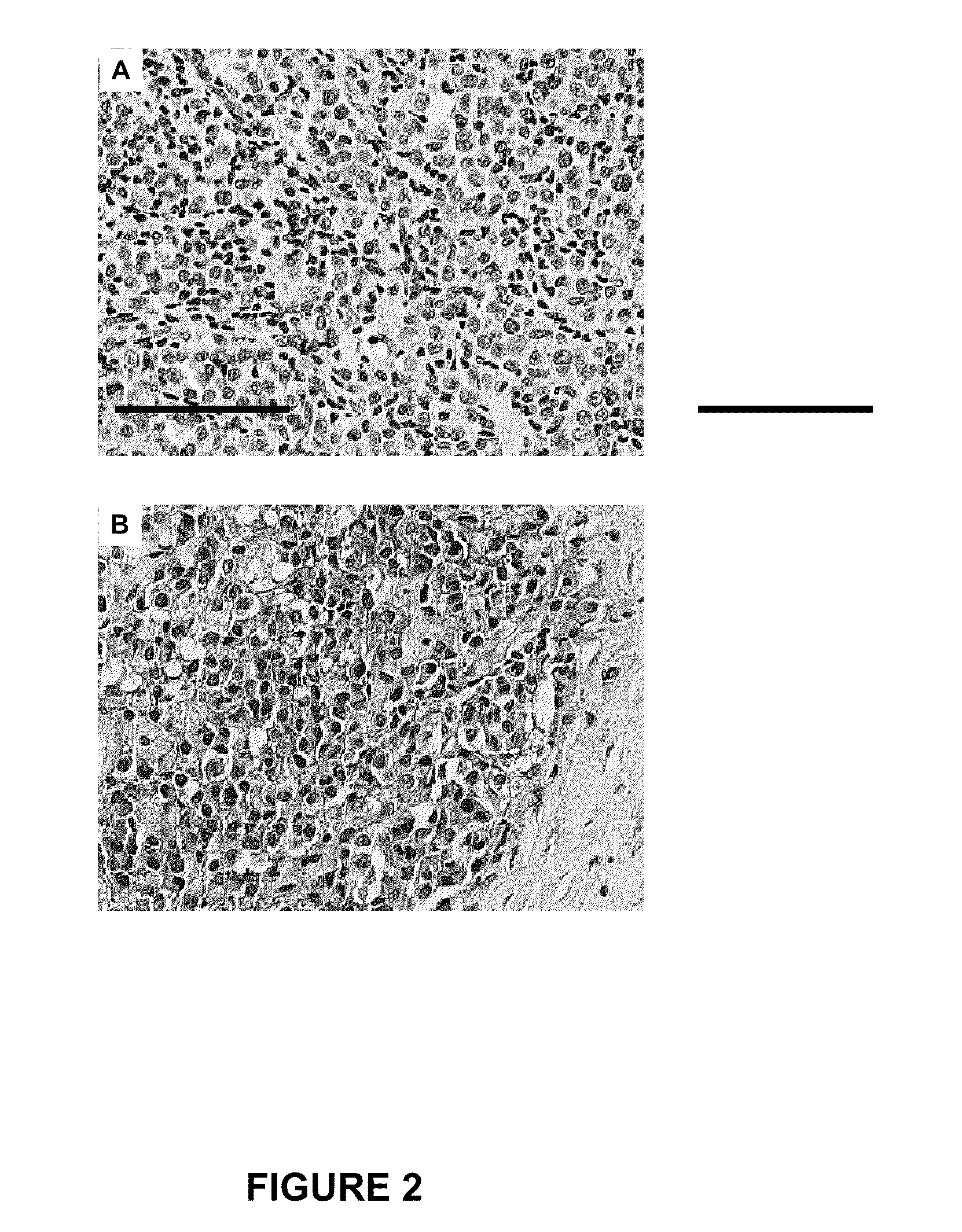B7-h3 as a biomarker for diagnosing the progression and early lymph node metastasis of cancer
a cancer and biomarker technology, applied in the field of cancer diagnosis, prognosis, and treatment, can solve the problems of difficult to determine the risk of recurrence, difficult to detect tumor progression, and difficult to determine the prognostic utility of melanoma cell surface markers
- Summary
- Abstract
- Description
- Claims
- Application Information
AI Technical Summary
Benefits of technology
Problems solved by technology
Method used
Image
Examples
example 1
B7-H3 Expression in Melanoma Tumor Specimens is a Tumor Progression Factor
[0058]The purpose of this study was to assess B7-H3 expression in primary and metastatic melanomas to determine its relation to disease progression.
[0059]Materials and Methods
[0060]Tissues. Paraffin-embedded archival tissue (PEAT) specimens were obtained for primary tumors from 57 patients with AJCC stage I (n=22), stage II (n=14), and stage III (n=21) melanoma. PEAT specimens also were obtained for metastatic tumors from 43 patients with AJCC stage III (n=23) and IV (n=20) melanoma. All patients underwent surgical resection at Saint John's Health Center (SJHC, Santa Monica, Calif.) from 1997 through 2006. Thirteen PEAT specimens of normal skin were used as controls. These skin PEAT specimens were histopathologically confirmed to be tumor free by a surgical pathologist.
[0061]Immunohistochemistry. Five μm-thick PEAT sections were cut and incubated on glass slides at 50° C. overnight for IHC. These PEAT sections...
example 2
B7-H3 is an Efficient Cell Surface Marker for Detecting Metastatic Melanoma Cells
[0073]Materials and Methods
[0074]Melanoma cell lines. Seven established human melanoma cell lines (M-1, M-101, M-111, M-12, M-14, JK0346 and MeI-B) were used in this study. These melanoma lines were cultured in GIBCO RPMI 1640 (Invitrogen, Carlsbad, Calif.), and supplemented with 10% heat-inactivated fetal bovine serum (FBS), 100 units / mL penicillin, and 100 units / mL streptomycin as previously described (Goto et al. 2008). All cell lines were grown at 37° C. in a humidified atmosphere at 5% CO2 as previously described (Nakagawa et al. 2007). Melanocyte primary cultures were commercially (Lonza Inc., Allendale, N.J.) obtained and grown in specific tissue culture medium as suggested by the manufacturers.
[0075]Flow cytometry. Flow cytometric analysis was performed using the BD FACSCalibur System (BD Biosciences, San Jose, Calif.). After washing in flow cytometry buffer (PBS with 1% FBS) to block nonspecifi...
example 3
B7-H3 Expression in Breast Cancer Tumor Specimens is a Progression Factor for Early Stages of Primary Breast Tumor
[0080]The purpose of this study was to investigate B7-H3 expression in primary breast tumors and its association with progression to develop regional nodal metastasis.
[0081]Materials and Methods
[0082]Breast cancer cell lines. Six established breast cancer cell lines (MCF7, T-47D, ZR-75-1, OR-090-1, 734 / B, and BT-20) were cultured in GIBCO RPMI 1640 (Invitrogen, Carlsbad, Calif.) supplemented with 10% heat-inactivated fetal bovine serum (FBS), 100 units / mL penicillin and 100 units / mL streptomycin. All cell lines were grown at 37° C. in a humidified atmosphere containing 5% CO2, as previously described (Nakagawa et al. 2007).
[0083]Patient Specimens. All specimens evaluated were from AJCC stage I-III breast cancer patients treated at John Wayne Cancer Institute (JWCI) at Saint John's Health Center (SJHC), Santa Monica, Calif. between 1997 and 2002. The use of specimens, cli...
PUM
| Property | Measurement | Unit |
|---|---|---|
| length | aaaaa | aaaaa |
| length | aaaaa | aaaaa |
| pH | aaaaa | aaaaa |
Abstract
Description
Claims
Application Information
 Login to View More
Login to View More - R&D
- Intellectual Property
- Life Sciences
- Materials
- Tech Scout
- Unparalleled Data Quality
- Higher Quality Content
- 60% Fewer Hallucinations
Browse by: Latest US Patents, China's latest patents, Technical Efficacy Thesaurus, Application Domain, Technology Topic, Popular Technical Reports.
© 2025 PatSnap. All rights reserved.Legal|Privacy policy|Modern Slavery Act Transparency Statement|Sitemap|About US| Contact US: help@patsnap.com



